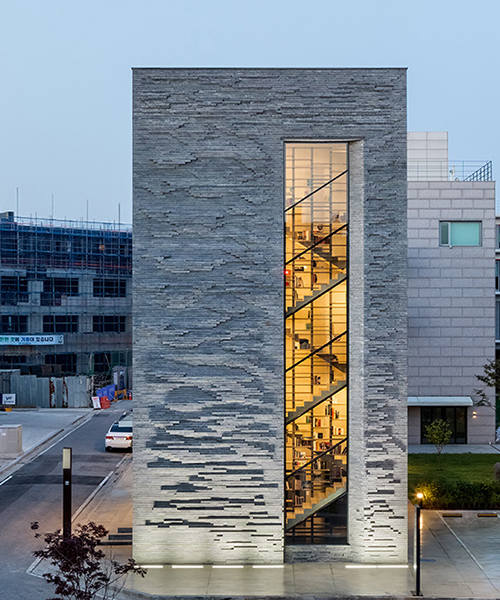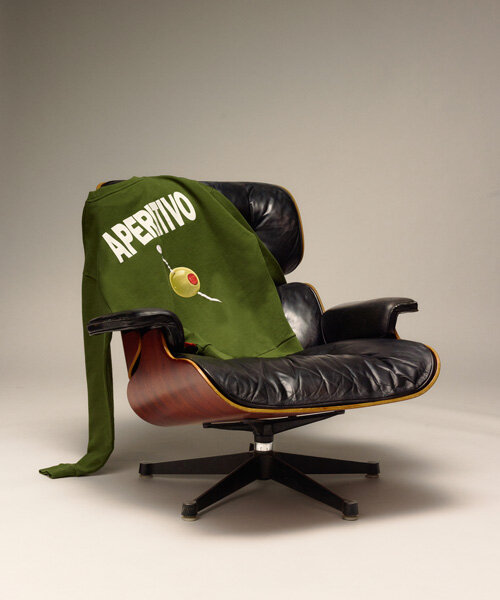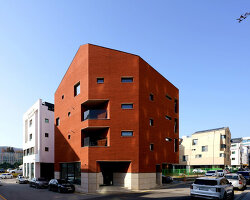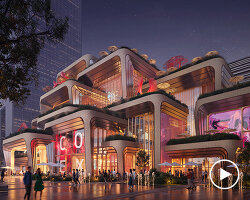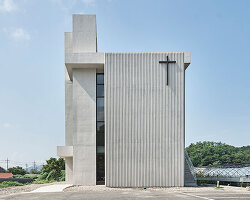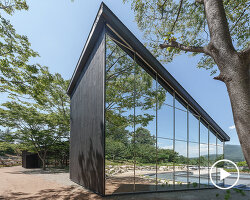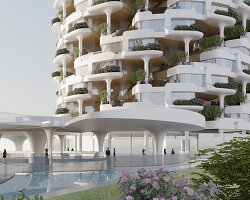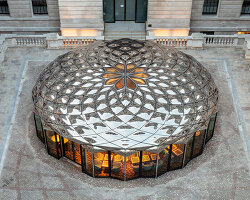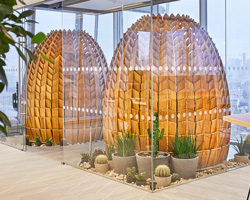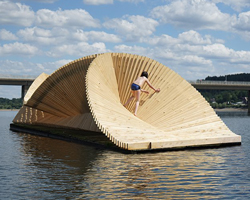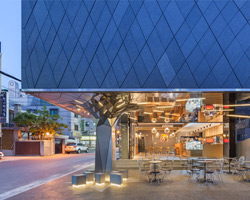london-based daewha kang design has recently completed a mixed-use building in paju book city, south korea. the simple block of stone and glass creates a bold visual statement with its pure lines and rich texture, standing out from the eclectic surrounding buildings. as the home of a publishing house intent on telling the stories of the unsung people of twentieth century korea, the building’s key feature is the hundred-year old staircase, a glazed structure wrapping around a bookcase with one shelf for every year of the last century.
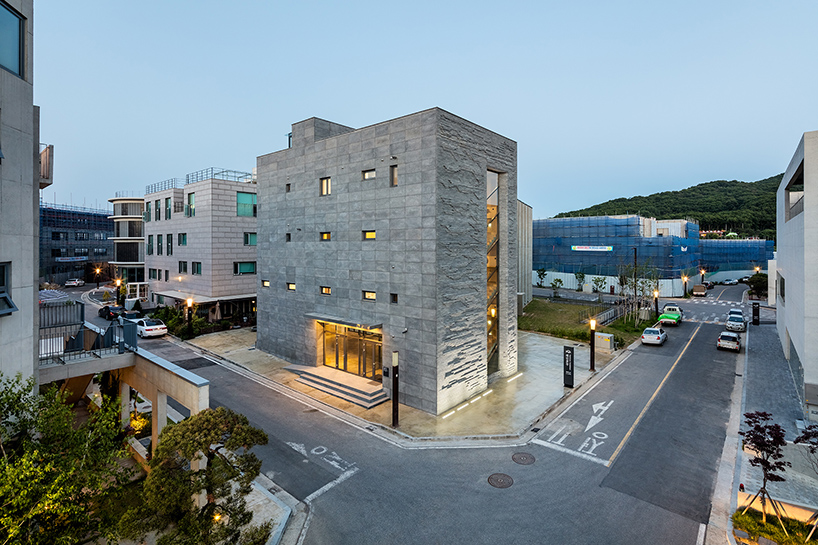
the building is characterized by simple volumes and austere lines
all photographs © kyungsub shin
the rainbow publishing headquarters by daewha kang design features a gallery on the ground floor, office spaces on the middle levels, and a residence on the top floor. the challenge of the project was to create a dramatic impact within limited means; simplifying the volume and focusing on the quadruple height space of the main circulation stair thus creates a sense of monumentality and strength. at the same time, subtle use of texture and rhythm adds layers of richness and meaning to otherwise austere forms. ‘the vision of the publishers is to produce small print run biographies of ordinary koreans who lived through the extraordinary times of the twentieth century, building up a country from one of the poorest in the world to a globally successful economy. their belief is that while the individual lives might be only small sparks of light, when collected and seen together they might come together into a beautiful rainbow,’ explains the studio.
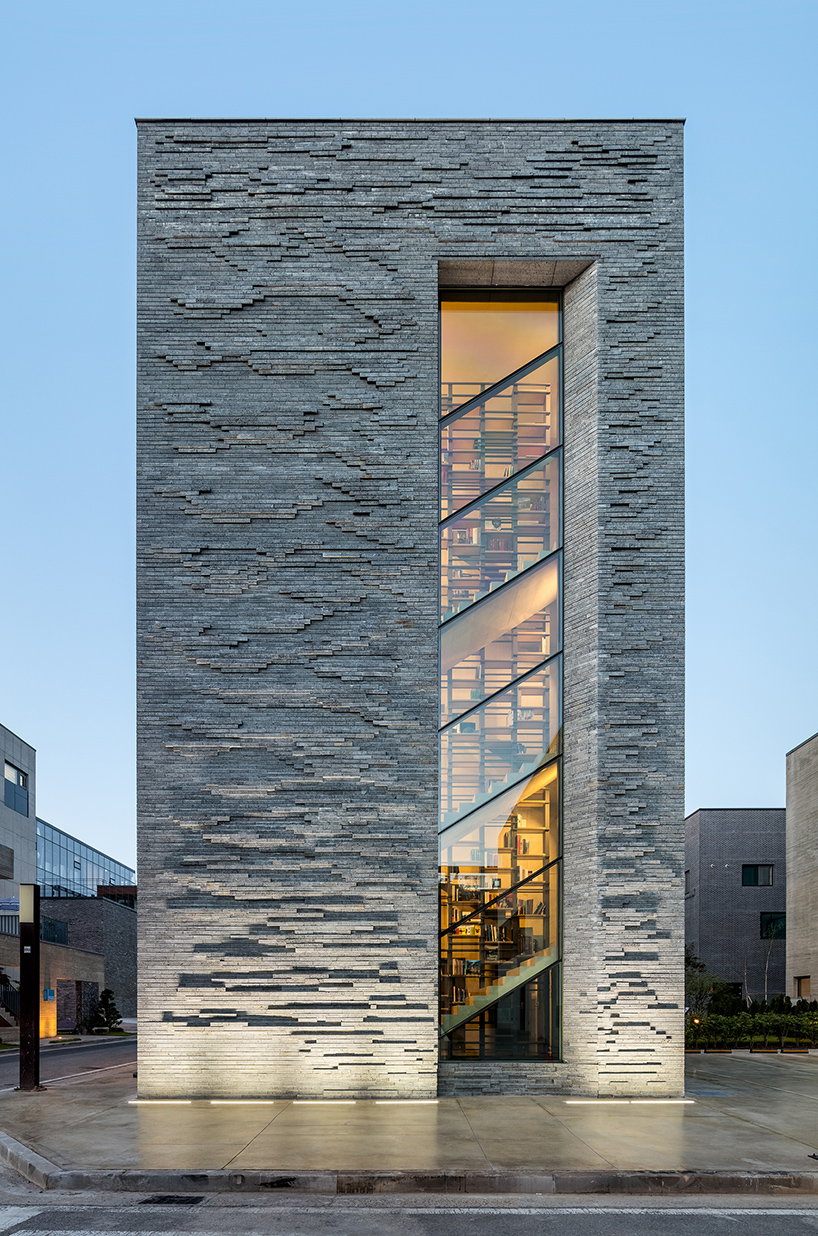
climbing the stairs, one meanders through the history of the country and its people
as for the staircase, it winds its way around one hundred levels of shelves, rising through the years from 1918 to 2017. as the publishers release each book, they will put the new biographies on the shelves corresponding to the years when their subjects were born. in this way, the journey through the building becomes one through the history of the country and its people. the stair is generated through a simple genetic algorithm that grows from the base to the top, branching out horizontally while reserving space for books for every year. the exterior façade has a similar logic of sedimentary growth, with volcanic stone bricks cut at three different depths, creating layers that echo the interior. recent academic research has linked stair climbing with longer life; people climbing five flights a day have been found to live 18% longer – making the staircase the most attractive space in the building. this encourages the family to take the stairs to the top floor rather than the lift.
an interactive application at the top of the stairs allows the four family members to tap in each time they reach the top of the headquarters. this helps record their total progress over the month and encourages them to compete against one another. as the years go by, the data collected from this application will form another layer of living history captured within the building.
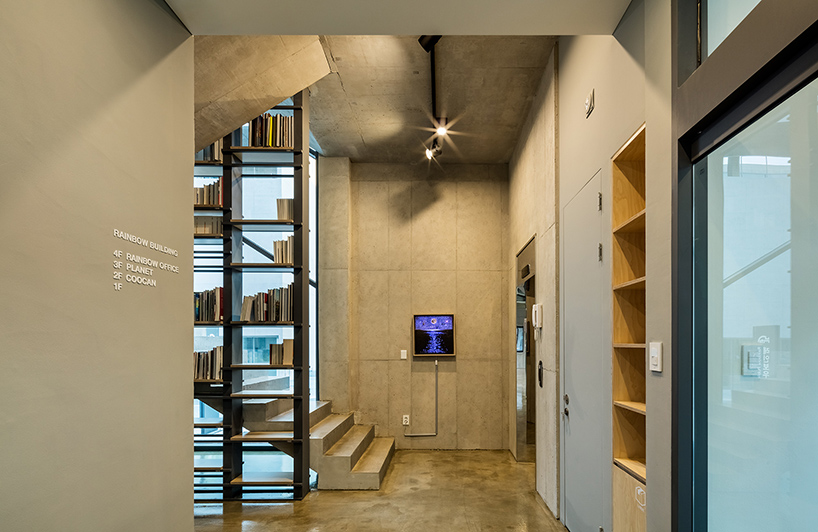
the entrance lobby opens to a glimpse of the bookcase and the stairs
in the end, the aim was to create a timeless building, and the simple materials of hyeon-mu-am volcanic stone, clear glass, and steel were selected for their durability and variegated textures. although having simple volumetrics, the building’s siting and orientation respond to a rigorous analysis of the local climate. the long façade faces southeast, towards the best views and abundant but less oppressive light. the hundred-year stair faces to the southwest, giving good views to the wetlands and the rest of the book city through a gap in the urban fabric. the long façade also absorbs the winter sun, radiating heat to the garden while blocking the northerly winter wind. finally, small windows on the north facade minimise heat loss while maintaining cross-ventilation.
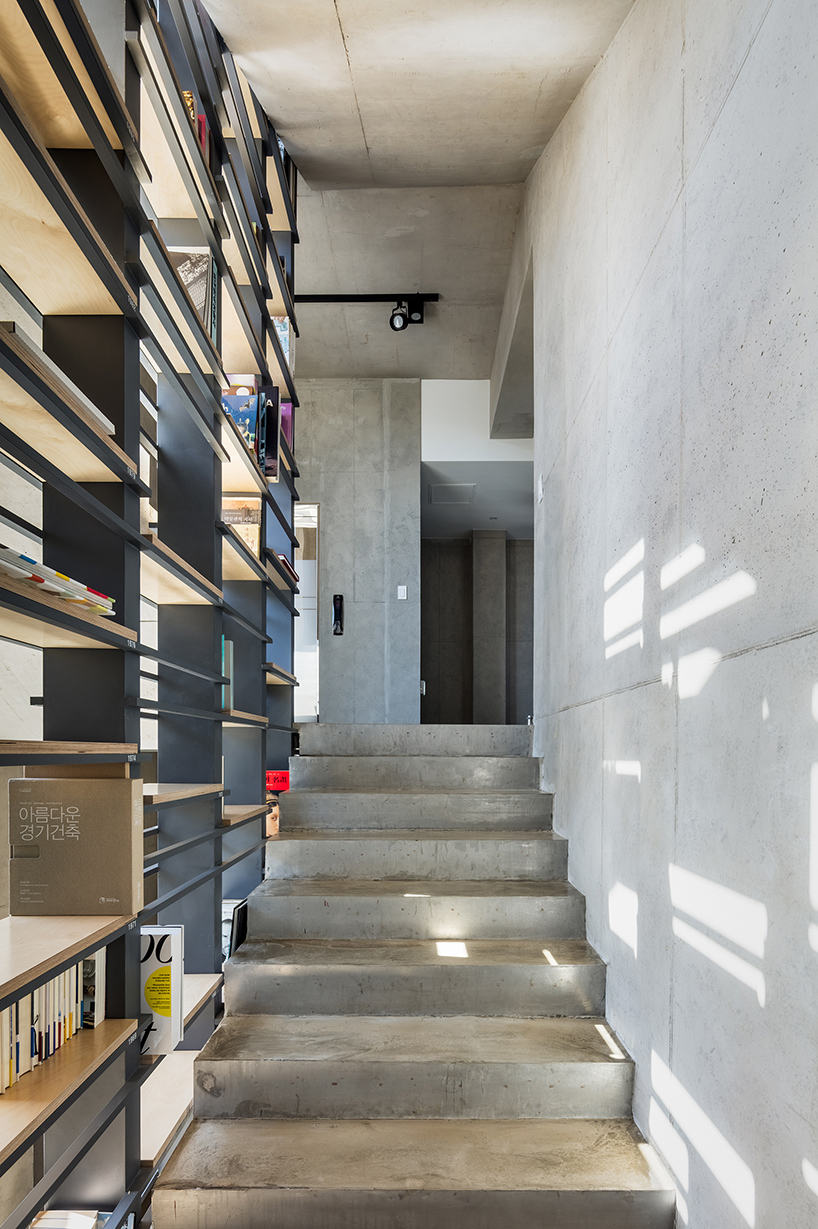
a genetic algorithm determined the pattern of the bookshelves, balancing a sense of order and organicity
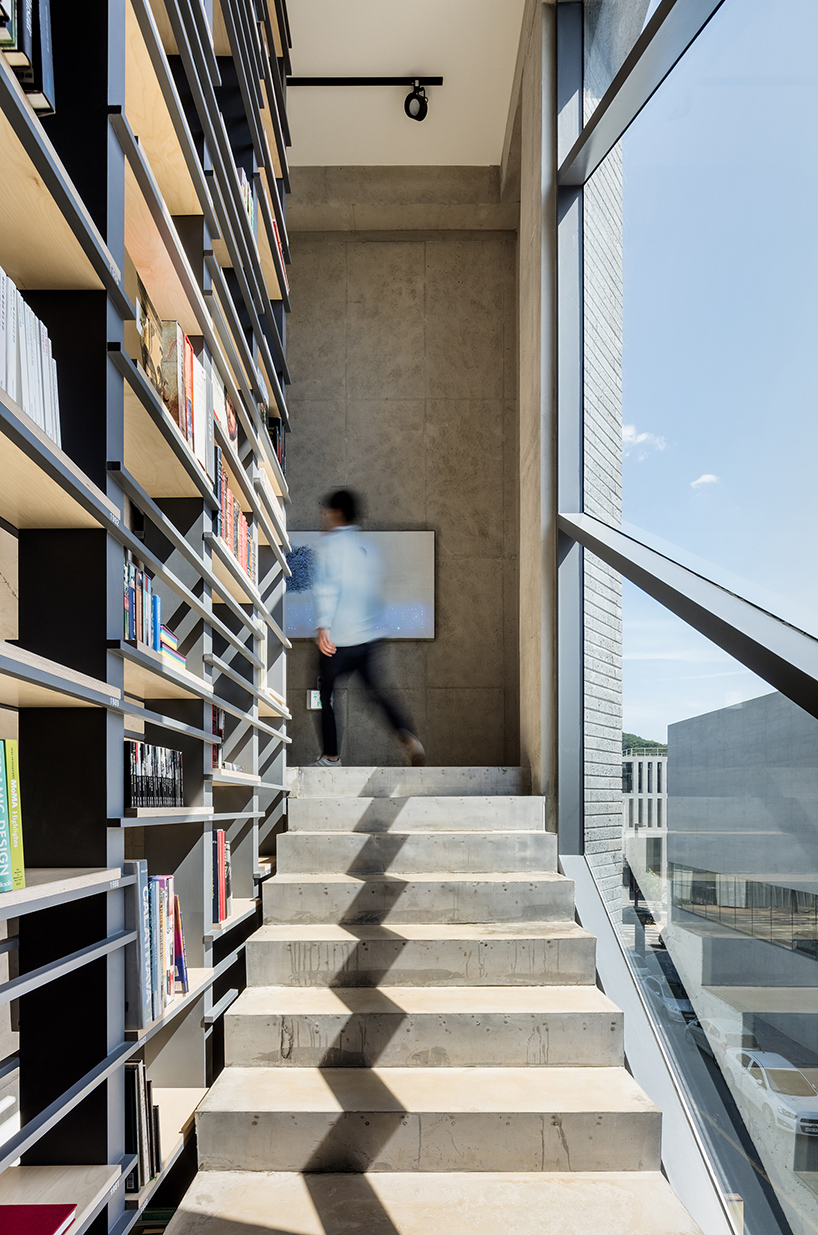
dramatic views of mountains and city open up as one climbs the stairs

the building tracks the family of four living in the top floor residence
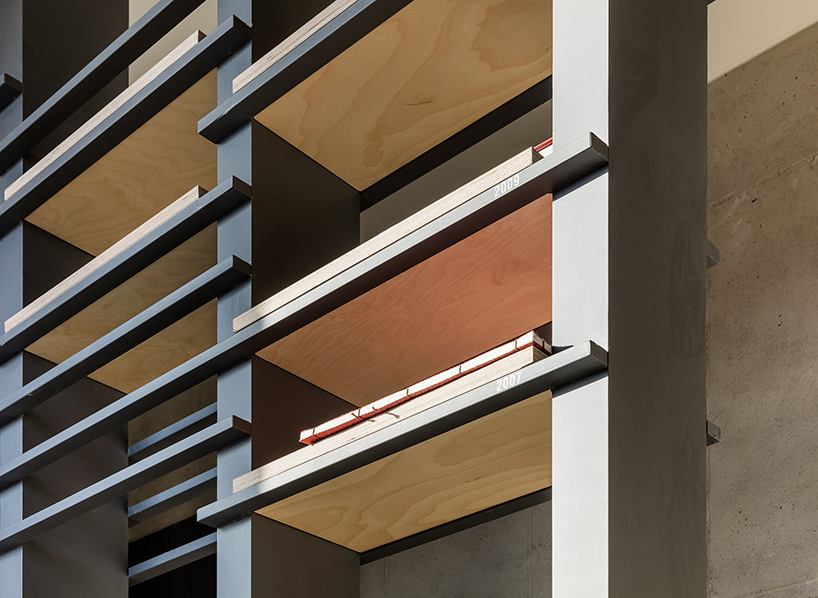
each shelf corresponds to one year from 1918 to 2017
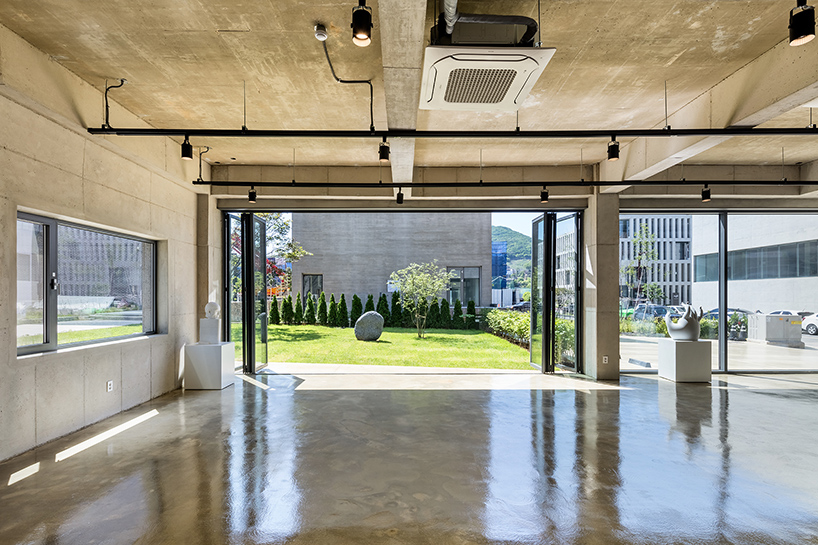
the building is open to the southeast and full of light
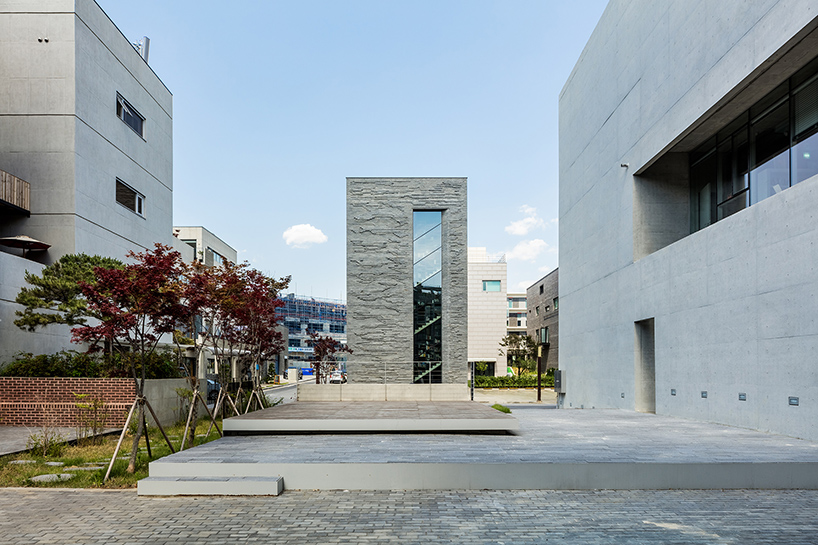
the building stands monumental and yet contextual within paju book city, near the border with north korea
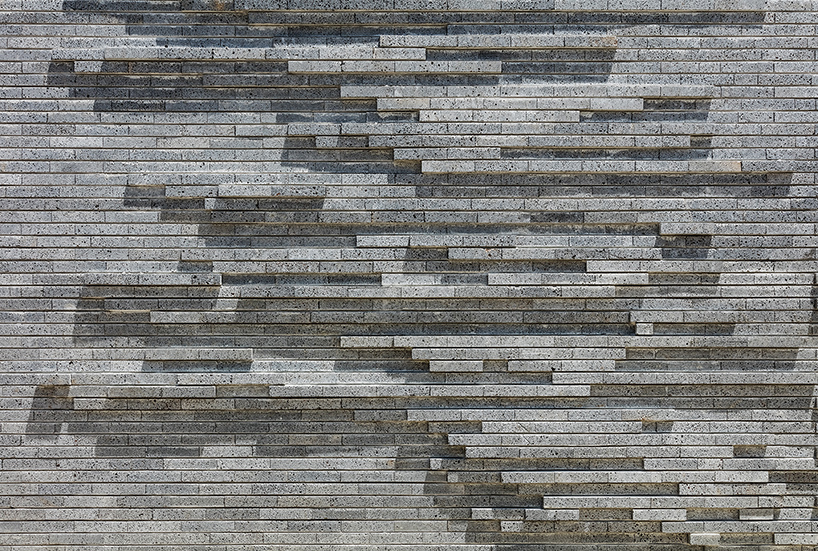
the brick-cut volcanic stone evokes layers of history and the theme of time prevalent in the building
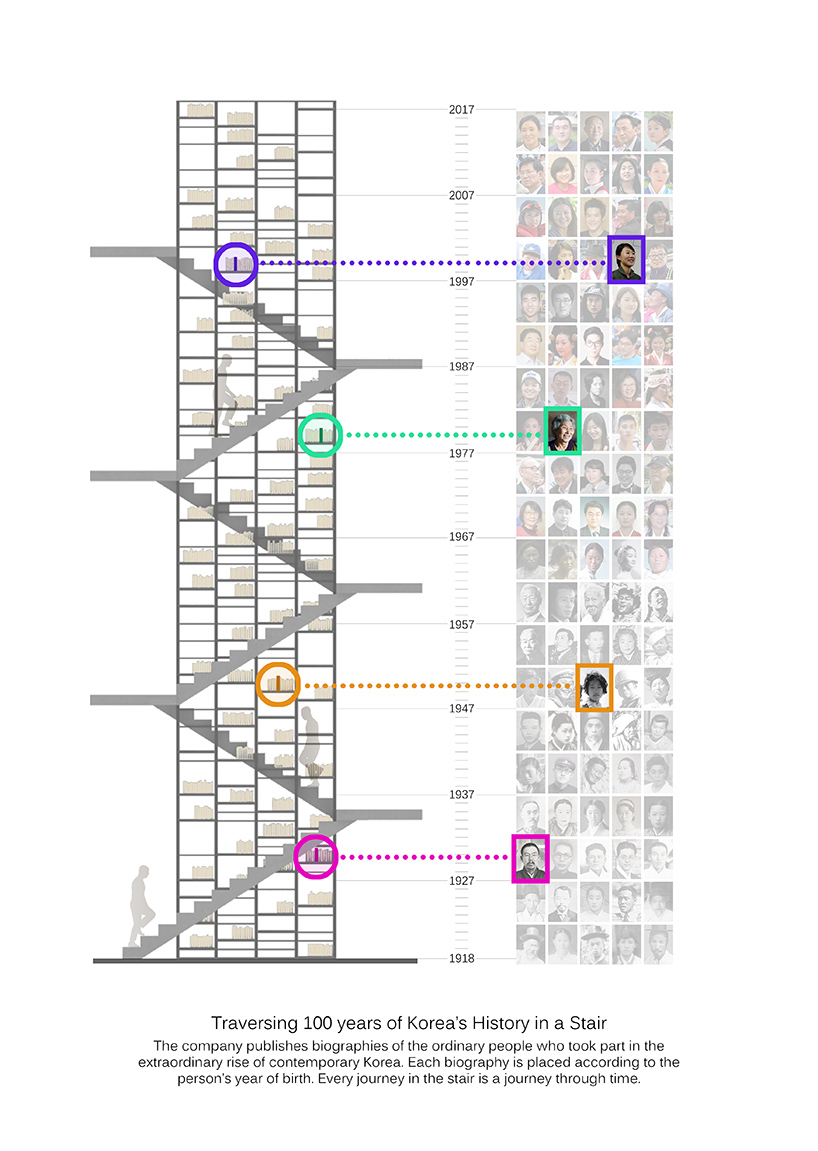
each book is placed on the shelf corresponding to the year of their birth
project info:
name: rainbow building
programme: offices, gallery, residence
location: 230-1 block, seopae-dong 472, paju city, korea
status: complete
year: 2017
design architect: daewha kang
design team: daewha kang monika byra weronika widenska paulina pawlata lawrence lynch monika bilska
local architect: lee & lee
contractor: l’espace
sustainability consultant: younha rhee
client: hee-jung kim, rainbow publishers
special thanks: seo je-sung, cooperative of paju book city park byeong-sun, the kujo structures
site area: 700 sqm
building area: 165 sqm
gross floor area: 660 sqm
designboom has received this project from our ‘DIY submissions‘ feature, where we welcome our readers to submit their own work for publication. see more project submissions from our readers here.
edited by: lea zeitoun | designboom
